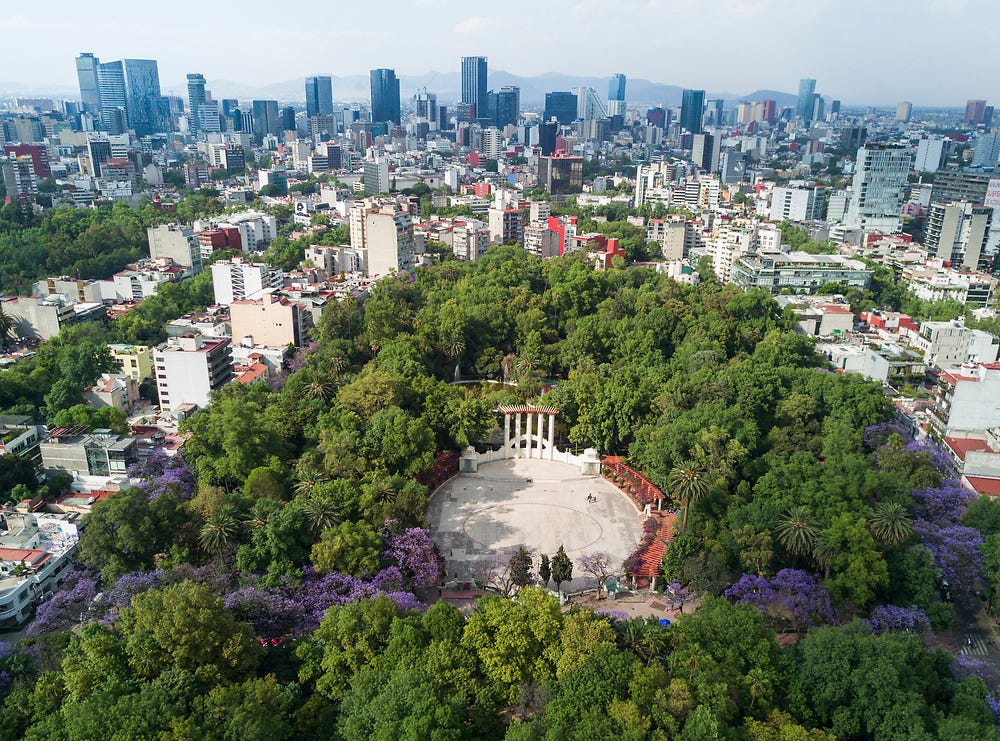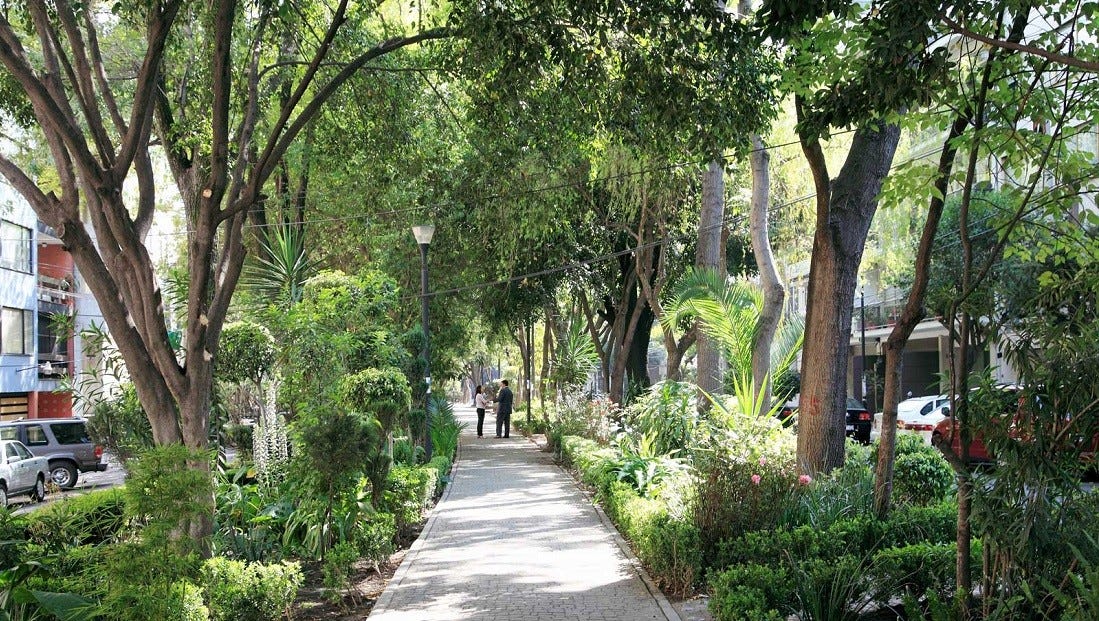Another Perspective on Gentrification in Mexico City
Throwing my hat into the lucha libre ring
Over the last few months, the number of articles talking about gentrification in Mexico City has reached a fever pitch. From discussions on messageboards like Reddit to pieces in the Los Angeles Times, Vox, and SFGate, it felt like I couldn’t go anywhere online without seeing another cookie-cutter article about gentrification in Mexico. At this point, it felt like Americans were gentrifying my internet. But this writing trend did not crop up without good reason though. This year, many of my Millennial Yuppie friends have made Mexico City their top destination pick, whether for a weekend excursion or a months-long adventure. It seems Iceland is no longer the cool Millenial destination (even if it is literally cool).
Personally, I’m happy to see Mexico City getting more recognition. Having spent months of my early childhood there and regularly visiting to see family, the city has always held a special place in my heart, and it’s nice to see Americans finally branching out to a different destination besides Tulum and Cabo.
But with so much discussion surrounding the growing gentrification of Mexico City, I started to have doubts about my warm feeling toward American visitors. In fact, I was also a participant, having spent a month in Mexico City exactly almost a year ago, living north of the ritzy Polanco neighborhood. But while English-speaking news tended to have more negative coverage, Spanish discussion boards were much more mixed, with an even mix of positive and negative sentiments. So what’s going on here?

Americans living long-term in Mexico are nothing new. Many American retirees have flocked to cities like Ajijic and San Miguel de Allende, lured by a lower cost of living, beautiful scenery, and a more preferable climate. Personally, this never really sat well with me, as these expats generally live in isolated communities, refuse to learn Spanish and treat Mexicans like servants rather than neighbors. A sociology study even claimed that white retirees came to Mexico to avoid diversification and recoup “old-fashioned” values, a claim that really doesn’t surprise me.
What’s different this time is that now it’s younger Americans that are moving to Mexico, spurred on by the rise of remote work. Mexico is an attractive location as it’s a short flight from the continental US and sits in the same time zone. With a strong dollar, many young Americans find that they can live luxuriously. Unlike their baby boomer parents, millennials value “authentic” experiences, making a stay in Mexico City a popular choice.
Mexico City is massive, with a population of 21 million people, making it the fifth largest city in the world. While Americans make a small dent in that figure, they have become much more noticeable as they dominate only a few neighborhoods in the city, namely, Roma Norte and Condesa. These are the two neighborhoods that have hip reputations and are considered to be the most gentrified.
Why have these two neighborhoods borne the brunt of gentrification? The history of gentrified neighborhoods usually begins with them starting out as low-cost places to live that attract artists, and Roma Norte and Condesa are no exception. What many people don’t realize is, these neighborhoods had extremely low rents because of earthquake risk.
In 1985, an 8.0 magnitude earthquake ripped through Mexico City and led to the deaths of 5,000 people. Roma Norte and Condesa were hit especially hard because they sit on the remnants of Lake Texcoco, which was drained when the Spanish razed the Aztec island capital of Tenochtitlan to build Mexico City. While these neighborhoods were high-crime disaster zones immediately after the earthquake, they evolved into chic bohemian enclaves, becoming a desirable (and expensive) location. But on the anniversary of the 1985 earthquake, a 7.1 magnitude tremor struck the city in 2017, reminding residents of the peril and leading some to flee the neighborhood.
Most American digital nomads moving to Mexico City are unaware of this history. What they do see though, are gorgeous tree-lined streets bordered by neighborhood taqueries, art galleries, and upscale restaurants. But before Americans moved in, it was upper-class hipster Mexicans who fueled the neighborhood’s transformation.
So why have Americans drawn such ire online? It all started with a tweet.
As reported by Vox, Becca Sherman, an American tech worker, tweeted a gorgeous picture of a tree-lined stucco corridor from somewhere in the city. But instead of receiving positive replies, thousands of people, Mexicans and non-Mexicans alike, piled on her Tweet. “Please don’t,” said one. “This city is becoming more and more expensive every day in part because of people like you and you don’t even realize it or care about it.” American media eventually picked up on the online discussion and the very real trend, leading to the deluge of coverage.
But upon reading story after story, I felt like there was a lack of coverage from the Mexican perspective (and too many opinions from the hellsite that is Twitter). Additionally, American media loves to place American moral dilemmas onto places and people they don’t really understand. What do Mexicans really think of this situation?
Mexican news media has generally taken a different tone than their US counterparts, with more mixed reactions. A writer from Animal Politico argues that gentrification isn’t the only problem, but points to the racism and classism that permits it as well (racism and classim in Mexico can be even more visible than in the United States). Several articles from El Universal report not on gentrification, but on the curious online debate surrounding gentrification. And Mexican station Radio Formula argues that gentrification isn’t happening because Roma and Condesa were already unaffordable to those outside the upper-middle class to begin with.
I talked to several Mexican friends and family members to get their perspectives. Many of them really weren’t aware of the issue at all. When I shared some of the Mexican and American news articles, most of the opinions I received were fairly neutral. One cousin of mine who lives in Roma shared that it wasn’t Americans he would run into more frequently, but Argentines and Spaniards. This was especially interesting because American media made it feel as though Roma and Condesa were entirely gringo-fied.

Friends and family members did share a positive perspective, as they noted the economic pros of local businesses benefiting from the influx of visitors. Americans may be earning a lot more, but while they earn in dollars, they spend in pesos. Tourism has always been one of Mexico’s major industries, and this is a different flavor. But at the same time, my friends and family have noted that they are coming from a middle-class perspective, someone living on the fringes may have a different view. One of my favorite channels run by a Brit living in Mexico City covered the gentrification story and mentioned a local torteria in Roma that was forced to close up shop due to rising rents. Additionally, there are some ugly Americans refusing to mask up when rules were enforced and being a general nuisance.
So what’s the verdict here? Are Americans gentrifying Mexico? Is this good or bad? Like all things in life, it’s complicated. But after several interviews and diving into dozens of articles I can say this. Roma Norte and Condesa have been gentrified, not by Americans, but by middle and upper class Mexican hipsters. Some lower-income Mexicans have been pushed out, and as foreigners (not just Americans) have moved in, pressure has increased. While some Mexicans have left the neighborhood, others have been able to profit through new businesses and new customers.
So should you reconsider your Airbnb in Roma Norte? Absolutely not. But while you visit, just keep in mind the role you play in an ever more globalized and connected world. And please spend your dollars at the local taqueria and not fucking Gong Cha Condesa.







Excelente tu artículo.
Great article👏🏼